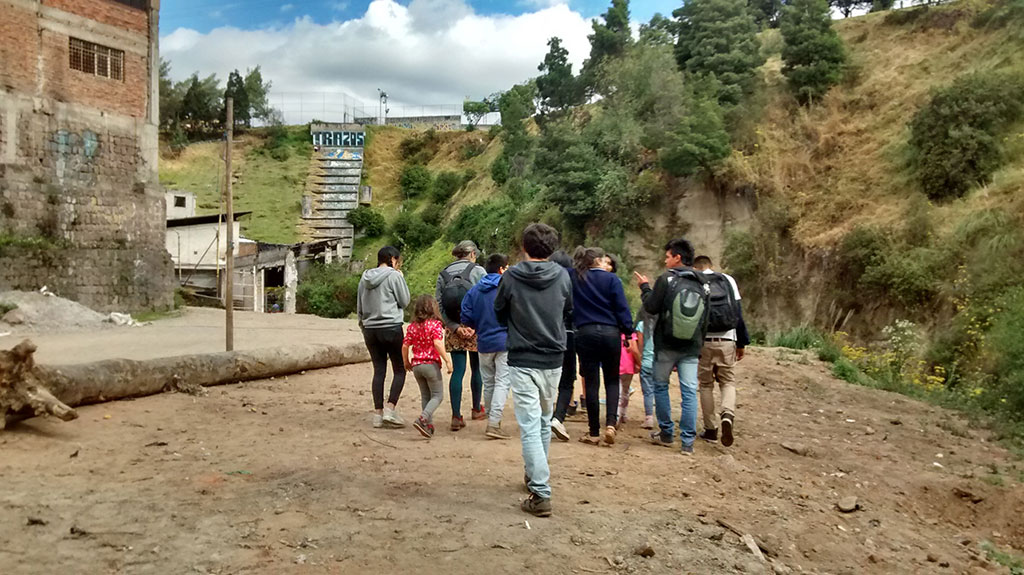


We continue, on delay, our Quito chronicles. Here we recount our meeting with the collective Climbing Walls:
Escalando paredes (Climbing Walls) is a meeting and collaboration space open to young people from the Chimbacalle neighborhood, where the
Interactive Science Museum
(MIC) is located in Quito. This project is coordinated by Tián Sánchez, who is part of the Community Mediation team of the
Museums of the City Foundation
(FMC).
The initiative continues after an exchange involving young people from Quito and young people from the city of Pittsburgh (USA) through the
Children’s Museum
. After this meeting, the young people continued to come to the MIC to develop various activities there, which were initially linked to the urban agriculture project
¡A la huerta!
coordinated by Pablo Ortiz, also a member of Community Mediation at the FMC.
After this first contact and through dialogue with the young people, for whom a meeting and workshop space of their own is opened in the old industrial building that currently houses the MIC, it is proposed to collectively promote a program of artistic interventions from urban agriculture in public spaces of the neighborhood with the aim of creating green communities.
The Chimbacalle neighborhood is located in a border area between the historical center of Quito and the northern and southern areas of the city, which differ significantly in their social composition and urban fabric.
After an initial moment of presentations, in which the group explains their activity and involvement in the project and shows us the orchard, we propose that they draw a map in which they indicate those spaces in the neighborhood that are significant to them for some reason, and in which they think they could develop some type of intervention. At that moment, we decided to visit one of those spaces that the young people call ‘el Hueco’ (the Hole).
El Hueco (The Hole) is a space located on the bank of the Machángara—a river that runs through the entire city of Quito and is heavily polluted—where different uses are given. Despite being connected to the neighborhood, it is an isolated and hidden space that is accessed through a dead-end alley; a meeting space for young people, who also come to isolate themselves from the bustle of the city.
Before reaching the hole, the young people point out the graffiti and tags that cover the walls of the alley that leads there, and a debate arises about civic-mindedness, forms of youth expression, aesthetics, and public space, as well as the possibility of intervening on these walls. However, once we arrive at the space, other conversations take place about the construction and use of public space. The hole seems like an ideal place to become a public and recreational space for the entire neighborhood: a natural redoubt in the middle of the city that has a self-built volleyball court—the trunk of a fallen tree serves as an improvised grandstand—and in which a few orchards extend along one of the slopes of the mountain. However, one of its main attractions for young people is its isolation and the fact that it is not a supervised space in which, to a certain extent, they can be outside the control of adults.
In situ, we discuss the potential of creative practices to appropriate and transform urban spaces, the role of citizens and authorities in this work, and the capacity of young people to influence the construction of the city. We also talked about the need to recover the river and its surroundings, about their capacity as a youth collective to influence this issue, and about the usefulness of artistic practices to draw attention to the environment.
Time is running out and we must return to the museum. It has been a productive afternoon in which we have discussed with the young people things that seem relevant to us and to which the FMC’s community mediation program can give continuity. We will follow the evolution of the collective from a distance.